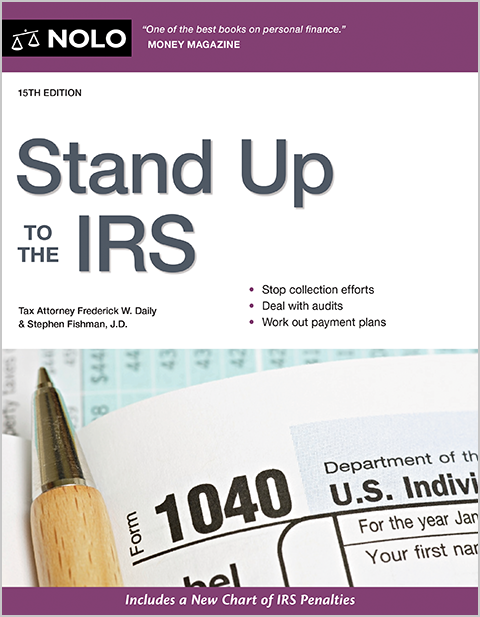Learn about this valuable new deduction that allows you to currently deduct equipment and other tangible personal property items that cost under $200.
IRS regulations that went into effect in 2014 established a new deduction for materials and supplies. "Materials and supplies" are tangible property used or consumed in your business operations that fall within any of the following categories:
- any item of tangible personal property (unit of property) that cost $200 or less
- any item of personal property with an economic useful life of 12 months or less, and
- components acquired to maintain or repair a unit of tangible property—that is, spare parts.
The cost of such items may be deducted in the year the item is used or consumed in your business—which may be later than the year purchased. To use this deduction, you are supposed to keep records of when such items are used or consumed in your business.
Property that Cost $200 or Less
Any item of tangible personal property you buy to use in your business that is not inventory and that costs $200 or less is currently deductible as materials and supplies. The cost may be deducted in the year the item is used or consumed.
Example: Acme, Inc., a billing company, purchases 10 scanners for use by its employees at a cost of $150 a piece. Acme's employees immediately begin using five of the scanners and Acme stores the remaining five machines for later use. Since each machine cost less than $200, they are materials and supplies and Acme may deduct each machine's cost when it begins using it in its business: five machines for the year of purchase and five machines for later years when the company begins using them.
Incidental Materials and Supplies
"Incidental" materials and supplies are personal property items that are carried on hand and for which no record of consumption is kept or for which beginning and ending inventories are not taken. In other words, these are inexpensive items not worth keeping track of. Costs of incidental materials and supplies are deductible in the year they are paid for, not when the items are used or consumed in the business.
Example: John, a professional writer, purchases two packs of pens and three boxes of paper clips he plans to use for his writing activity over the next two years. The cost was minimal and he does not keep inventory of each pen or paperclip. These are incidental compared to his business and deductible in the year he paid for them.
Change in Accounting Method
If your business was in existence before 2014 and you didn't have a policy in place of currently deducting items that qualify as materials and supplies that exactly matched the requirements of the new IRS regulations (which you likely didn't), your adoption of the rule in 2014 and later is considered to be a change in your method of accounting. Ordinarily, you must obtain IRS permission for such a change by filing IRS Form 3115, Application for Change in Accounting Method. Unfortunately, IRS Form 3115 is an extraordinarily complex form that few taxpayers will be able to file without the help of a knowledgeable tax professional.
However, the IRS has enacted special optional relief from this requirement for "smaller" taxpayers. This includes all taxpayers with (1) assets under $10 million (as of the first day of the tax year) or (2) less than $10 million in annual gross receipts for each distinct business they own. Under IRS Revenue Procedure 2015-20, such taxpayers may elect to apply the materials and supplies deduction in 2014 and later without filing Form 3115 or making any other filing. You simply treat such expenses as deductible materials and supplies in your books and records. By electing this relief, a taxpayer does not apply any part of the IRS repair regulations (of which the materials and supplies deduction is a part) to years before 2014. This may or may not be advantageous, and is a matter to discuss with your tax professional.
Interaction with De Minimis Safe Harbor
The IRS regulations also contain a new de minimis safe harbor that permits business owners to deduct tangible personal property that costs no more than $500 (or more for larger businesses that have certified financial statements). If you elect to use the de minimis safe harbor, you must apply it to amounts paid for all materials and supplies that meet the requirements for deduction under the safe harbor. (IRS Reg. §1.263(a)-1(f)(3)(ii).) Thus, if you use the de minimis safe harbor, you can largely ignore the materials and supplies deduction. This is to your advantage since the $500 de minimis safe harbor for most businesses is larger than the $200 materials and supplies limit. Moreover, the de minimis safe harbor permits you to deduct the cost of items the year they are purchased, instead of when they are actually used or consumed in your business.
One exception where the materials and supplies deduction could prove useful, even where a de minimis safe harbor election is made, is for components used to repair property. If the components cost more than $500, the de minims safe harbor can't be used. But the materials and supplies deduction can be used, no matter how much the components cost. The deduction may be taken in the year when the components are actually used in the course of a repair or maintenance.
Talk to a Tax Attorney
Need a lawyer? Start here.
How it Works
- Briefly tell us about your case
- Provide your contact information
- Choose attorneys to contact you
- Briefly tell us about your case
- Provide your contact information
- Choose attorneys to contact you

